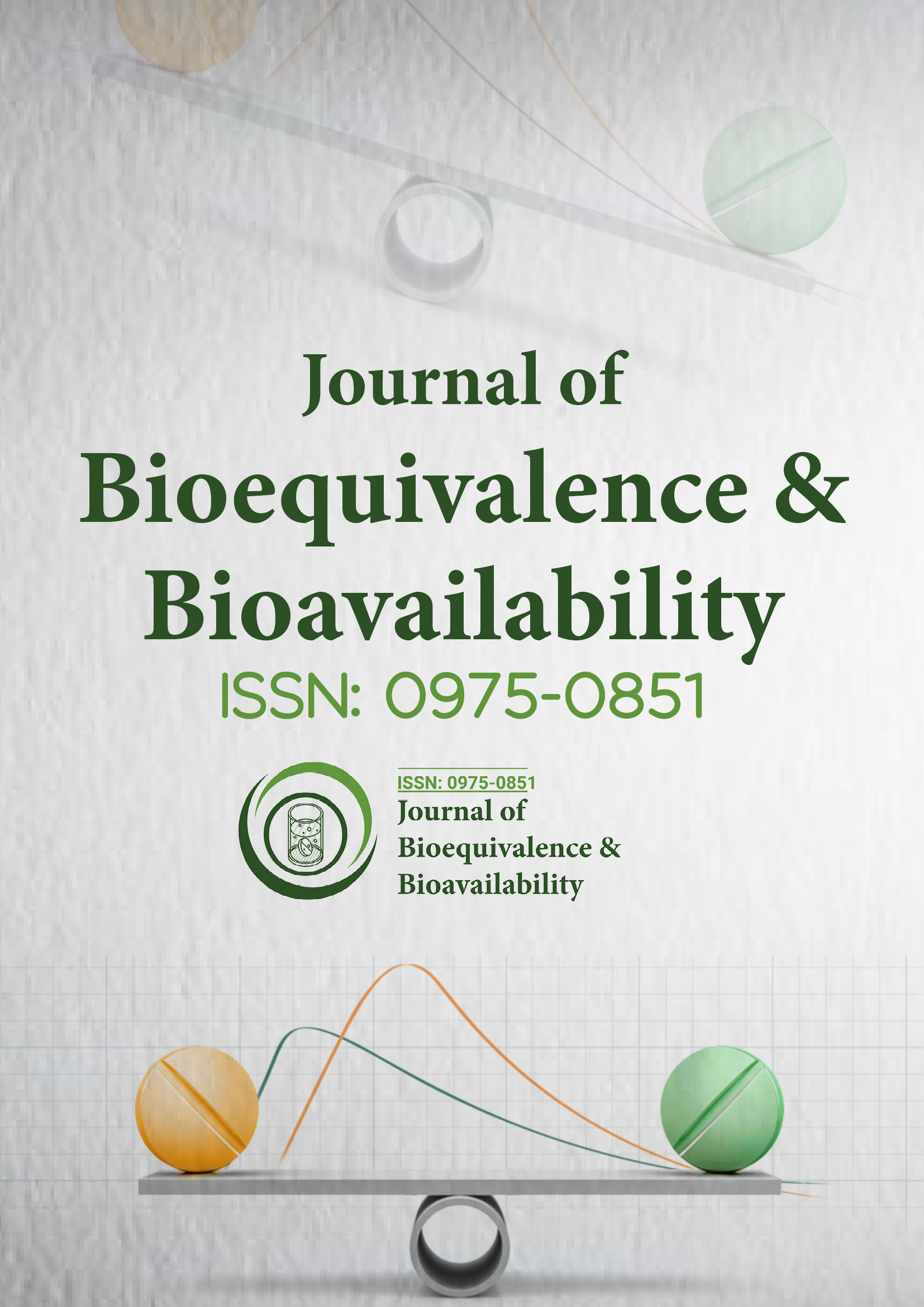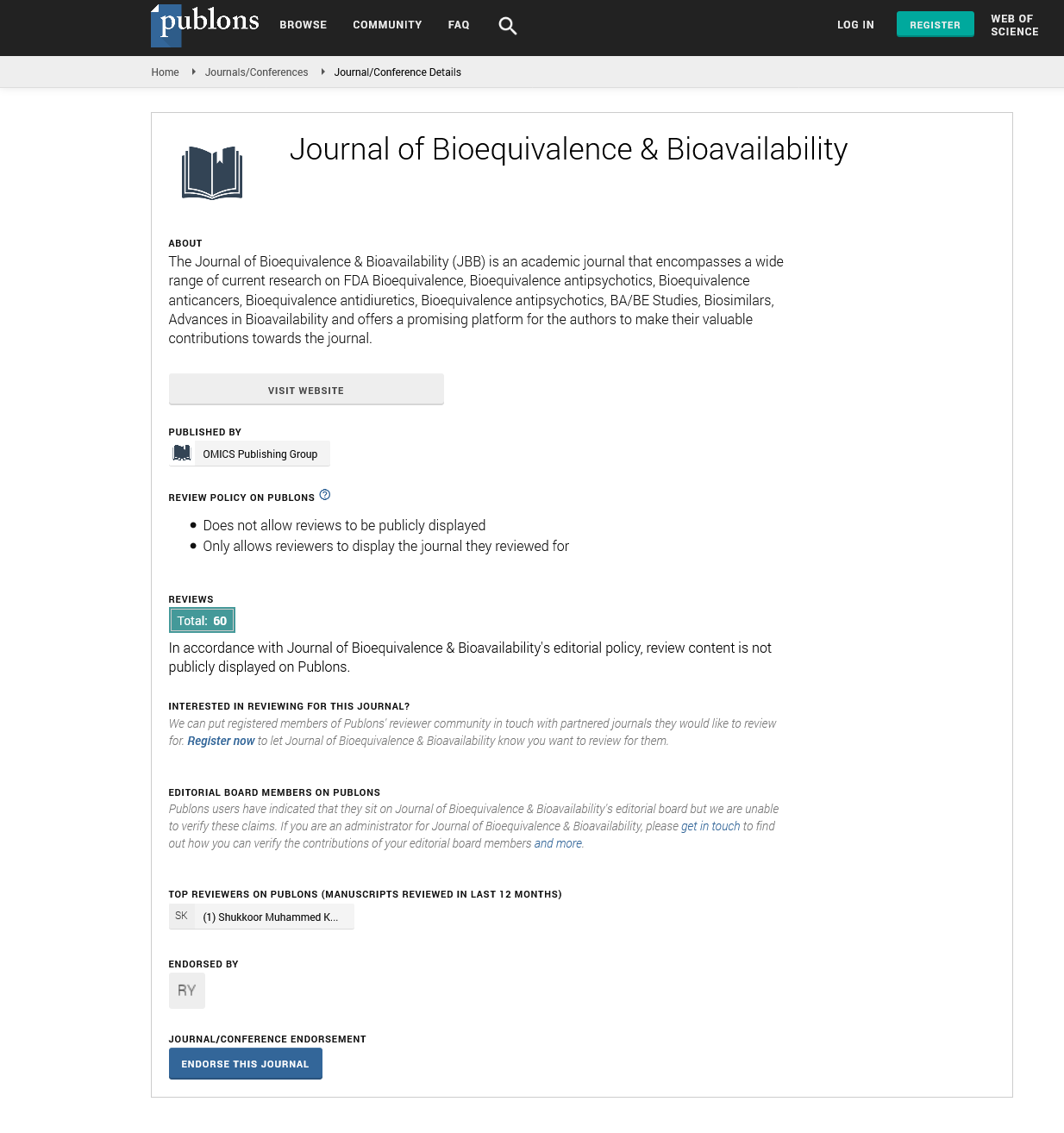Indexed In
- Academic Journals Database
- Open J Gate
- Genamics JournalSeek
- Academic Keys
- JournalTOCs
- China National Knowledge Infrastructure (CNKI)
- CiteFactor
- Scimago
- Ulrich's Periodicals Directory
- Electronic Journals Library
- RefSeek
- Hamdard University
- EBSCO A-Z
- OCLC- WorldCat
- SWB online catalog
- Virtual Library of Biology (vifabio)
- Publons
- MIAR
- University Grants Commission
- Geneva Foundation for Medical Education and Research
- Euro Pub
- Google Scholar
Useful Links
Share This Page
Journal Flyer

Open Access Journals
- Agri and Aquaculture
- Biochemistry
- Bioinformatics & Systems Biology
- Business & Management
- Chemistry
- Clinical Sciences
- Engineering
- Food & Nutrition
- General Science
- Genetics & Molecular Biology
- Immunology & Microbiology
- Medical Sciences
- Neuroscience & Psychology
- Nursing & Health Care
- Pharmaceutical Sciences
Perspective - (2025) Volume 17, Issue 3
Regulatory Guidelines in Drug Development and Approval
Yvonne Schnaars*Received: 28-May-2025, Manuscript No. JBB-25-30139; Editor assigned: 30-May-2025, Pre QC No. JBB-25-30139 (PQ); Reviewed: 13-Jun-2025, QC No. JBB-25-30139; Revised: 20-Jun-2025, Manuscript No. JBB-25-30139 (R); Published: 29-Jun-2025, DOI: 10.35248/0975-0851.25.17.639
Description
Regulatory guidelines in pharmaceuticals serve as the foundation for ensuring the safety, efficacy, and quality of drugs throughout their lifecycle. These guidelines are established by national and international regulatory agencies to standardize drug development, manufacturing, testing, and marketing, protecting patients while facilitating access to effective therapies. They are especially critical in areas such as bioequivalence, bioavailability, generic drug approval, and clinical pharmacology, where precise adherence to standards ensures therapeutic consistency across products.
One of the primary purposes of regulatory guidelines is to define the requirements for drug approval. Agencies such as the U.S. Food and Drug Administration (FDA), European Medicines Agency (EMA), World Health Organization (WHO), and other national authorities provide detailed instructions for conducting preclinical and clinical studies, evaluating pharmacokinetics and pharmacodynamics, and establishing safety and efficacy. These guidelines cover all stages of drug development, from initial laboratory research to post-marketing surveillance. Compliance with these standards ensures that therapeutic agents meet rigorous quality benchmarks before reaching patients.
In the context of generic drugs, regulatory guidelines emphasize the demonstration of bioequivalence to reference products. Generic formulations must provide the same rate and extent of absorption as the innovator drug, ensuring similar therapeutic outcomes. Agencies provide specific protocols for conducting bioequivalence studies, including study design, subject selection, analytical methods, and statistical evaluation. Parameters such as maximum plasma concentration (C_max), time to reach maximum concentration (T_max), and area under the plasma concentration-time curve (AUC) are evaluated against reference products. Regulatory acceptance ranges, typically 80% to 125% for C_max and AUC, are established to ensure clinical equivalence.
Good Manufacturing Practices (GMP) are another critical component of regulatory guidelines. GMP standards govern all aspects of drug production, including facility design, equipment qualification, raw material sourcing, process validation, quality control, and record keeping. Adherence to GMP ensures that each batch of a drug is consistently manufactured to meet predefined quality specifications, minimizing the risk of contamination, variability, or substandard products. Regulatory agencies routinely inspect manufacturing sites to ensure compliance and enforce corrective actions when deviations are identified.
Regulatory guidelines also address pharmacovigilance and post-marketing surveillance. Continuous monitoring of adverse drug reactions, safety signals, and therapeutic outcomes helps detect rare or long-term side effects that may not have been apparent in clinical trials. Guidelines outline reporting requirements, risk management plans, and procedures for labeling updates or product recalls. These measures are important for maintaining public trust and ensuring ongoing drug safety.
International harmonization of regulatory guidelines is increasingly important in the global pharmaceutical landscape. Organizations such as the International Council for Harmonisation of Technical Requirements for Pharmaceuticals for Human Use develop standardized guidelines that are adopted across multiple regions. Harmonization reduces duplication of effort, facilitates global drug approval, and ensures consistent quality and safety standards for drugs marketed internationally. This is particularly relevant for multinational clinical trials and global distribution of generics and biosimilars.
In conclusion, regulatory guidelines in pharmaceuticals are essential for ensuring drug quality, safety, and efficacy. They provide clear frameworks for drug development, bioequivalence studies, manufacturing, and post-marketing surveillance. Compliance with these standards protects patients, promotes public confidence, and supports the global availability of effective medicines. Continuous refinement and harmonization of regulatory guidelines are critical in keeping pace with scientific advancements, ensuring that innovations in drug therapy reach patients safely and reliably.
Citation: Schnaars Y (2025). Regulatory Guidelines in Drug Development and Approval. J Bioequiv Availab. 17:639.
Copyright: © 2025 Schnaars Y. This is an open-access article distributed under the terms of the Creative Commons Attribution License, which permits unrestricted use, distribution, and reproduction in any medium, provided the original author and source are credited.

